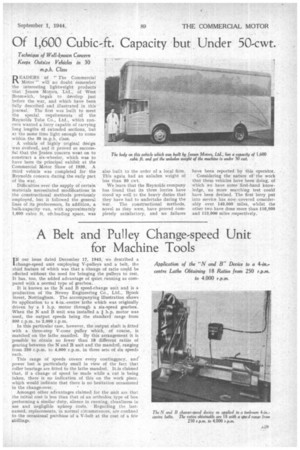Of 1,600 Cubic-ft. Capacity but Under 50-cwt.
Page 31

If you've noticed an error in this article please click here to report it so we can fix it.
Technique of Well-known Concern Keeps Outsize Vehicles in 30 m.p.h. Class RENDERS of "The Commercial Motor " will no doubt remember the interesting lightweight products that Jensen Motors, Ltd., of West Bromwich, begah to develop just before the war, and which have been fully described and illustrated in this journal. The first was built to meet the special requirements of the Reynold* Tube Co., Ltd., which concern wanted a lorry capable of carrying long lengths of extruded sections, but at the same time light enougb to come within the 30 m.p.h. class,
A vehicle of highly original design was evolved, and it proved so successful that the Jenien concern went on to construct a six-wheeler, which was to have been its principal exhibit at the Commercial Motor Show of 1939. A third vehicle was completed for the Reynolds concern during the early part of the war.
Difficulties over the supply of certain materials necessitated modifications in the constructional methods previously employed, but it followed the.general lines of its predecessors. In addition, a bulk-capacity van, with approximately 1,600 cubic ft. of. loading space, was also built to the order of a local firm. This again had an unladen weight of less than 50 cwt.
We learn that the Reynolds company has found that its three lorries have stood up well to the heavy duties that they have had to undertake during the war. The constructional methods, novel as they were, have proved completely satisfactory, and no failures have been reported by this operator.
Considering the nature of: the work that these vehicles have been doing, of which we have some first-hand knowledge, no more searching test could have been devised. The first lorry put into service has now covered considerably over 140,000 miles, whilst the other two have done more than 116,000 and 113,000 miles respectively.




















































